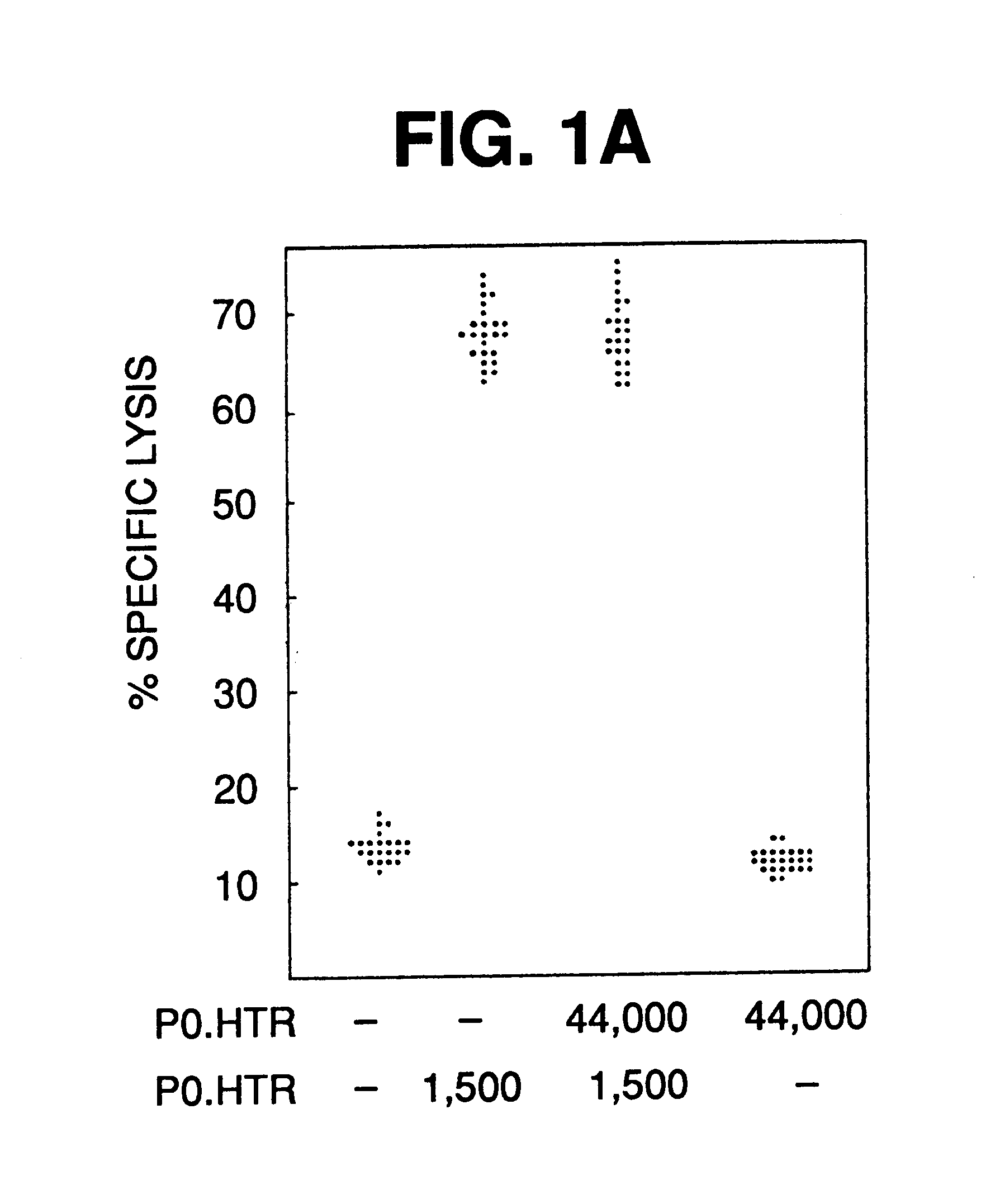Isolated nucleic acid molecules coding for tumor rejection antigen precursor MAGE-3 and uses thereof
a tumor and antigen technology, applied in the field of isolated nucleic acid molecules coding for tumor rejection antigen precursor mage3, can solve the problem that one cannot state that only one type of trap is expressed in individuals of a particular typ
- Summary
- Abstract
- Description
- Claims
- Application Information
AI Technical Summary
Problems solved by technology
Method used
Image
Examples
example 2
Previous work reported by DePlaen et al., Proc. Natl. Acad. Sci. USA 85: 2274-2278 (1988) the disclosure of which is incorporated by reference herein had shown the efficacy of using cosmid library transfection to recover genes coding for tum.sup.- antigens.
Selective plasmid and genomic DNA of P1.HTR were prepared, following Wolfel et al., Immunogenetics 26: 178-187 (1987). The transfection procedure followed Corsaro et al., Somatic Cell Molec. Genet 7: 603-616 (1981), with some modification. Briefly, 60 .mu.g of cellular DNA and 3 .mu.g of DNA of plasmid pHMR272, described by Bernard et al., Exp. Cell. Biol. 158: 237-243 (1985) were mixed. This plasmid confers hygromycin resistance upon recipient cells, and therefore provides a convenient way to screen for transfectants. The mixed DNA was combined with 940 ul of 1 mM Tris-HCl (pH 7.5), 0.1 mM EDTA; and 310 ul 1 M CaCl.sub.2. The solution was added slowly, and under constant agitation to 1.25 ml of 50 mM Hepes, 280 mM NaCl, 1.5 mM Na...
example 3
Eight days after transfection as described in example 2, supra, antibiotic resistant transfectants were separated from dead cells, using density centrifugation with Ficoll-Paque. These cells were maintained in non-selective medium for 1 or 2 days. The cells were plated in 96 well microplates (round bottom), at 30 cells / microwell in 200 ul of culture medium. Anywhere from 100-400 microwells were prepared, depending on the number of transfectants prepared. Agar colony tests gave estimates of 500-3000. After 5 days, the wells contained about 6.times.10.sup.4 cells and replicate plates were prepared by transferring 1 / 10 of the wells to microplates which were then incubated at 30.degree. C. One day later, master plates were centrifuged, medium removed, and 750 CTLs against P815 antigen A (CTL-P1:5) were added to each well together with 10.sup.6 irradiated syngeneic feeder spleen cells in CTL culture medium containing 40 U / ml recombinant human IL-2, and HAT medium to kill stimulator cells...
example 4
The CTL assays carried out for P1A.T2 demonstrated that it presented antigen A ("P815A"), and therefore had received the gene from P1.HTR. To that end, this cell line was used as a source for the gene for the antigen precursor in the following experiments.
Prior work had shown that genes coding for tum.sup.- antigens could be recovered directly from transfectants obtained with a cosmid library. See DePlaen et al., Proc. Natl. Acad. Sci. USA 85: 2274-2278 (1988). This procedure was followed for recovery of the P815 gene.
Total genomic DNA of P1A.T2 was partially digested with restriction endonuclease Sau 3A1, and fractionated by NaCl density gradient ultracentrifugation to enrich for 35-50 kb DNA fragments, following Grosveld et al., Gene 10: 6715-6732 (1982). These fragments were ligated to cosmid arms of C2RB, described by Bates et al., Gene 26: 137-146 (1983), the disclosure of which is incorporated by reference. These cosmid arms had been obtained by cleavage with SmaI and treatmen...
PUM
| Property | Measurement | Unit |
|---|---|---|
| pH | aaaaa | aaaaa |
| pH | aaaaa | aaaaa |
| concentration | aaaaa | aaaaa |
Abstract
Description
Claims
Application Information
 Login to View More
Login to View More - R&D
- Intellectual Property
- Life Sciences
- Materials
- Tech Scout
- Unparalleled Data Quality
- Higher Quality Content
- 60% Fewer Hallucinations
Browse by: Latest US Patents, China's latest patents, Technical Efficacy Thesaurus, Application Domain, Technology Topic, Popular Technical Reports.
© 2025 PatSnap. All rights reserved.Legal|Privacy policy|Modern Slavery Act Transparency Statement|Sitemap|About US| Contact US: help@patsnap.com



